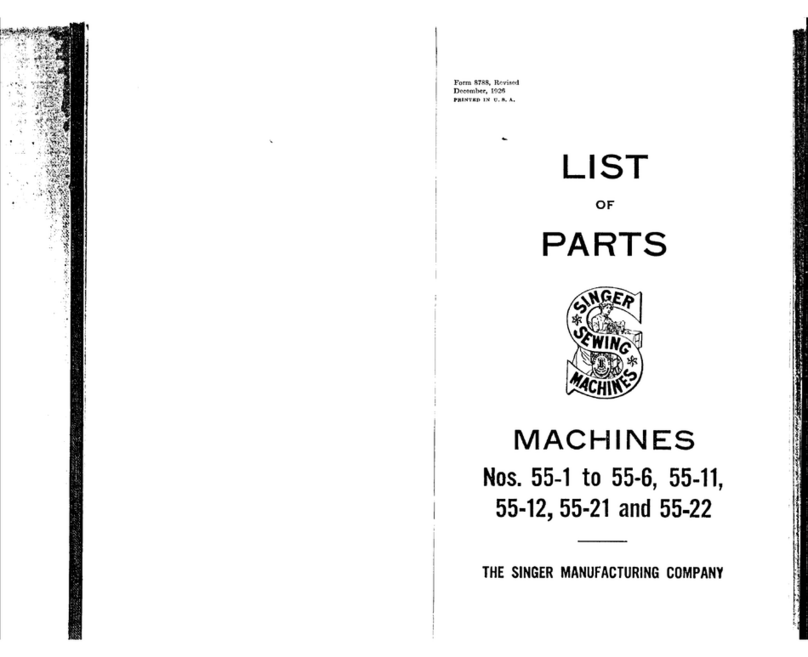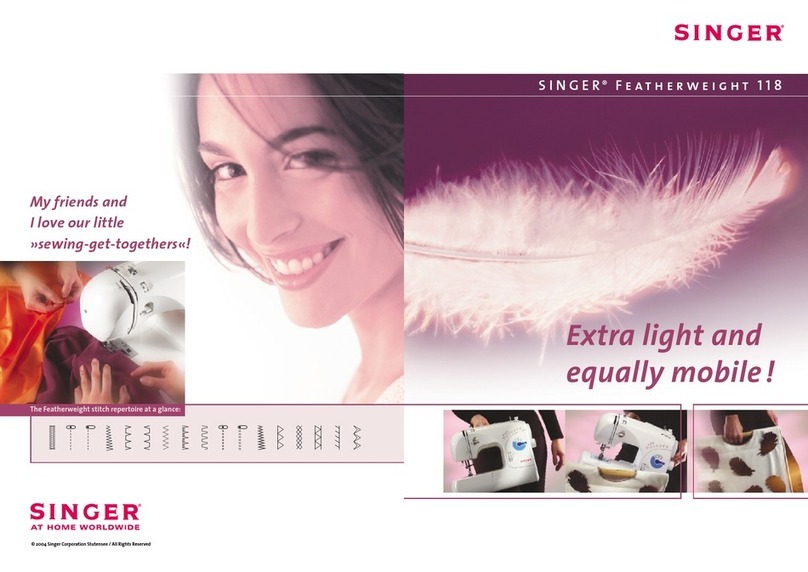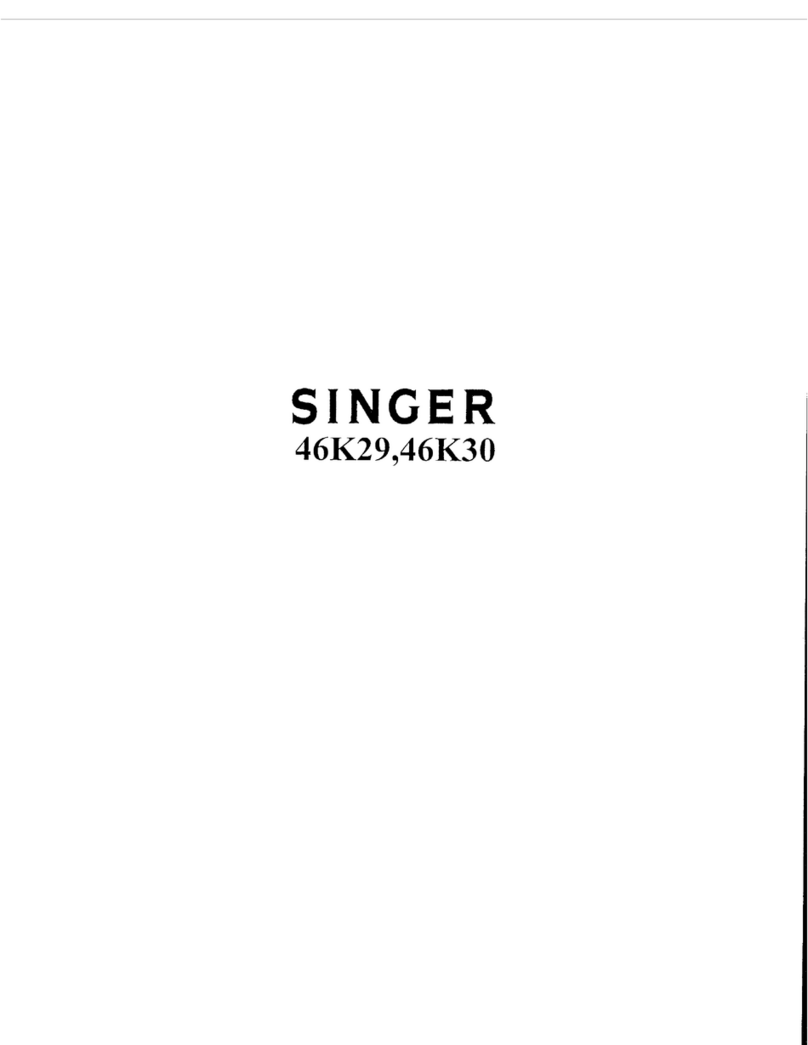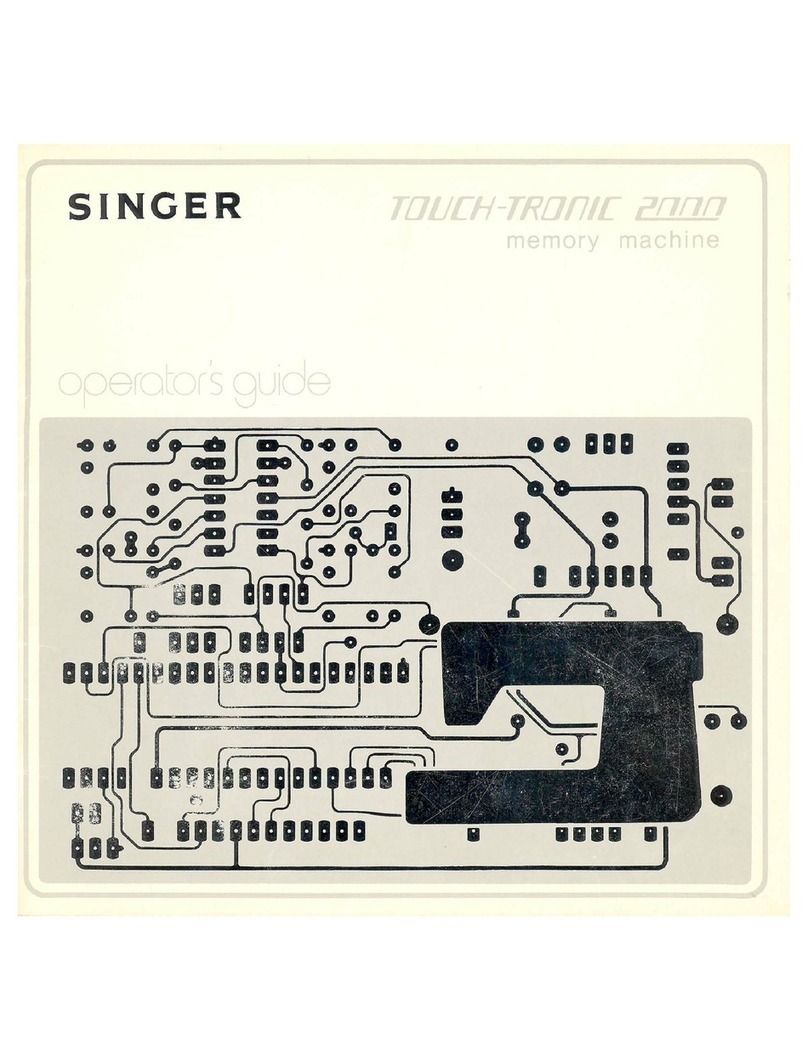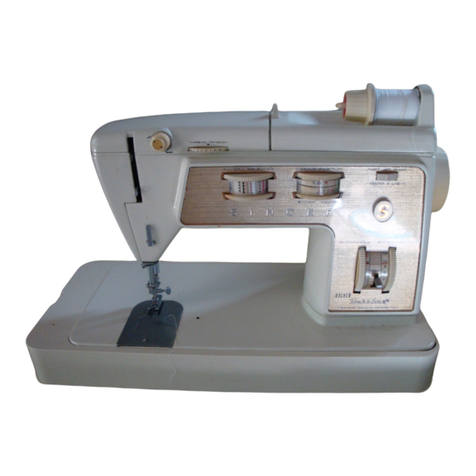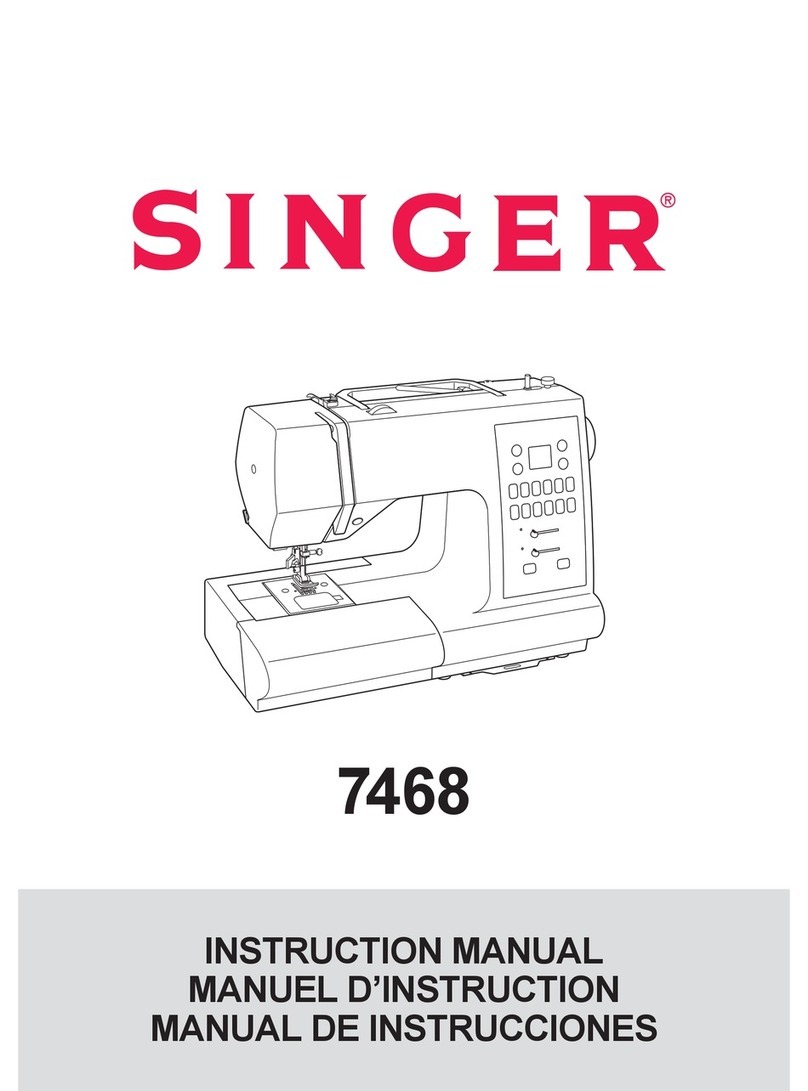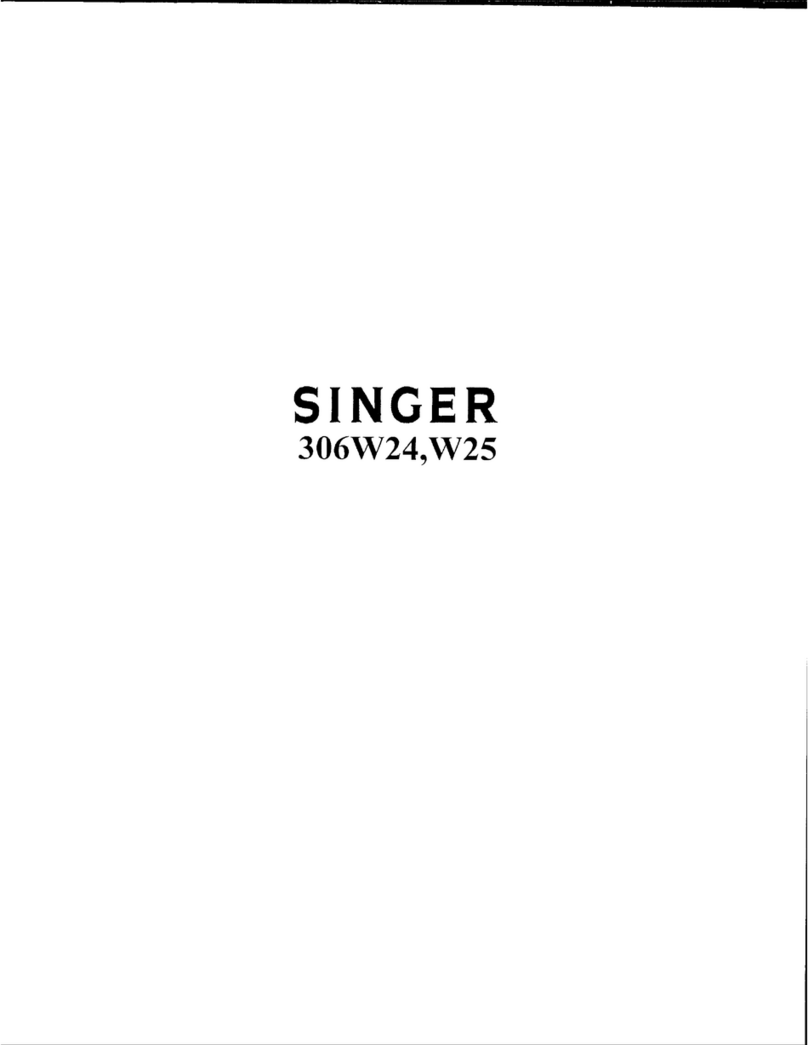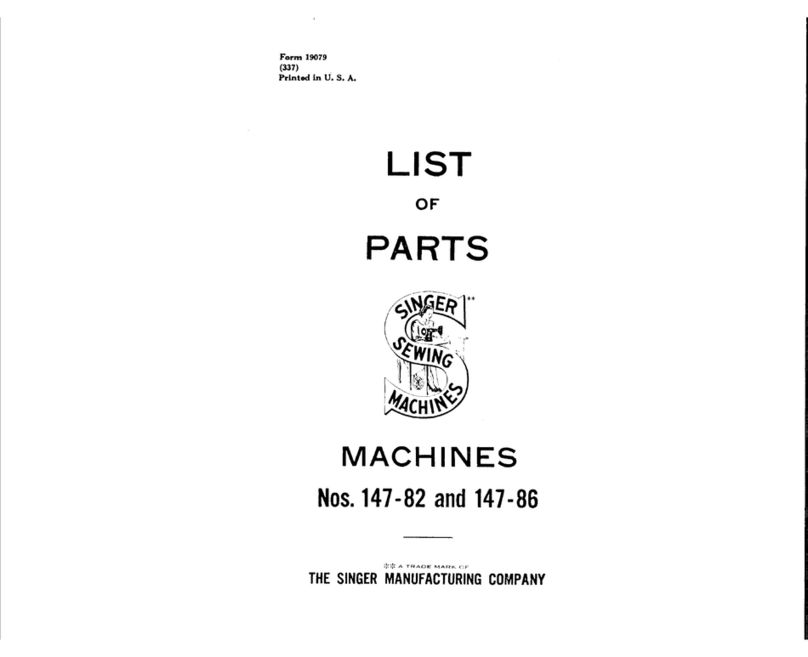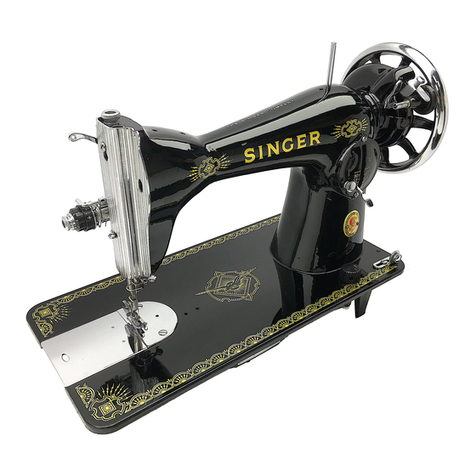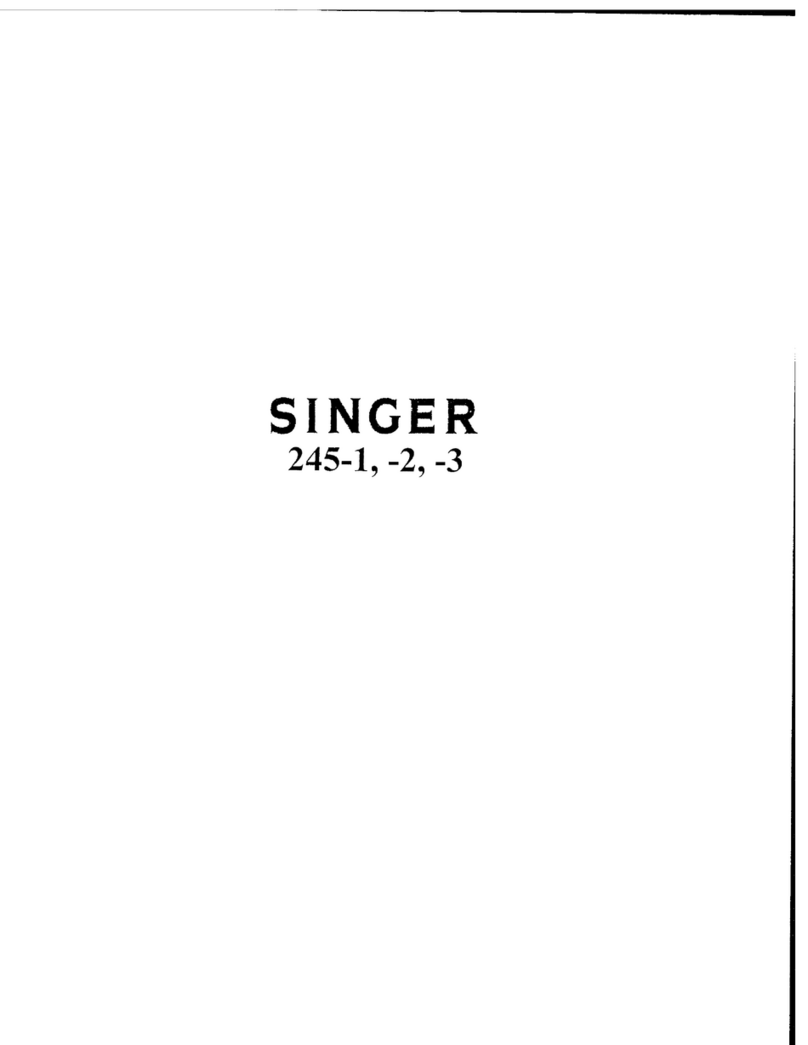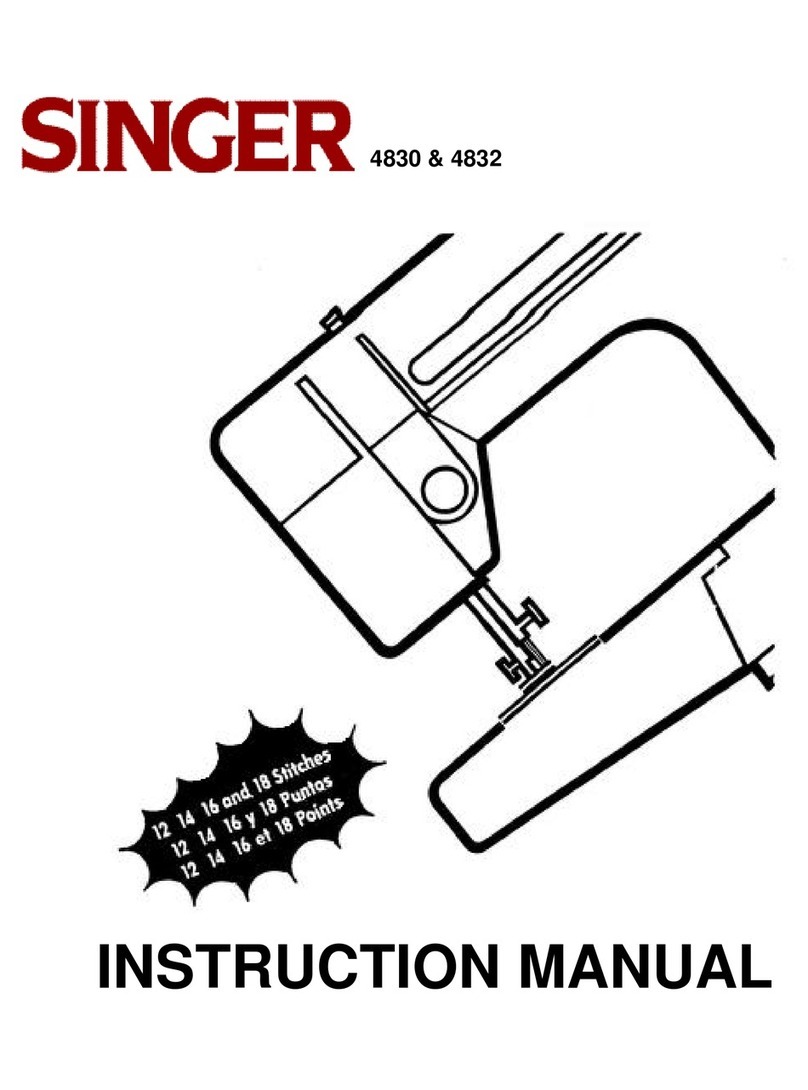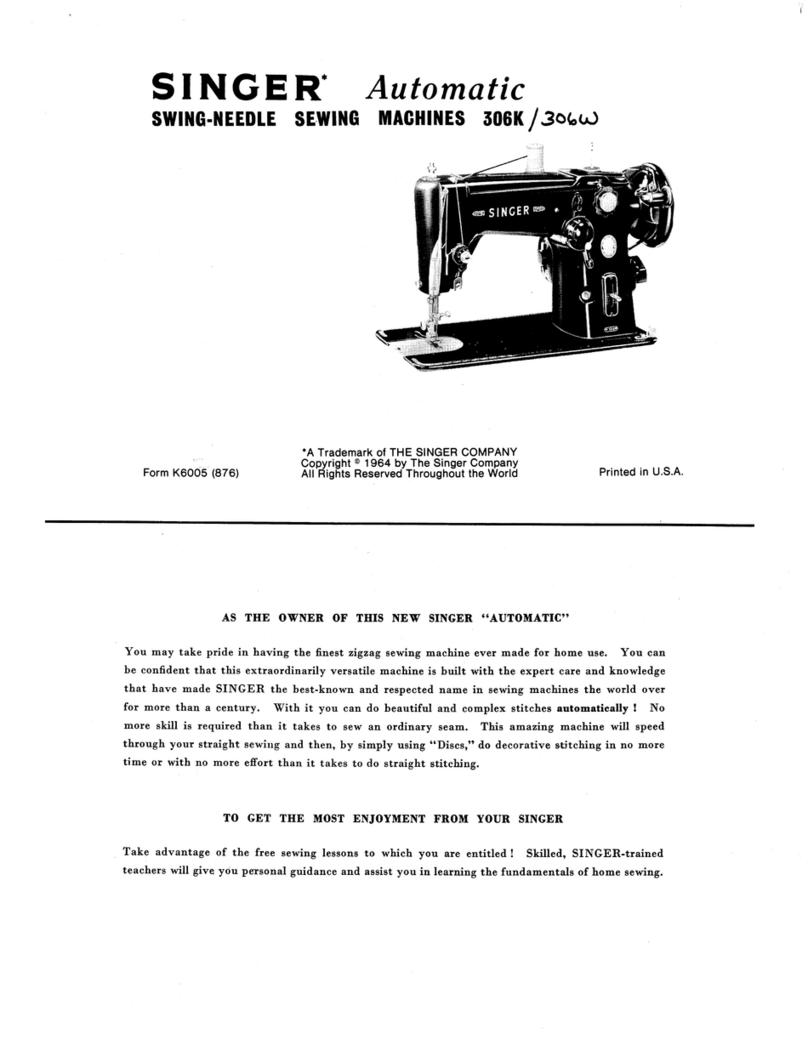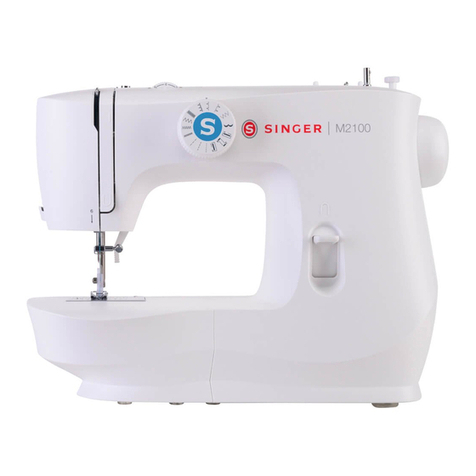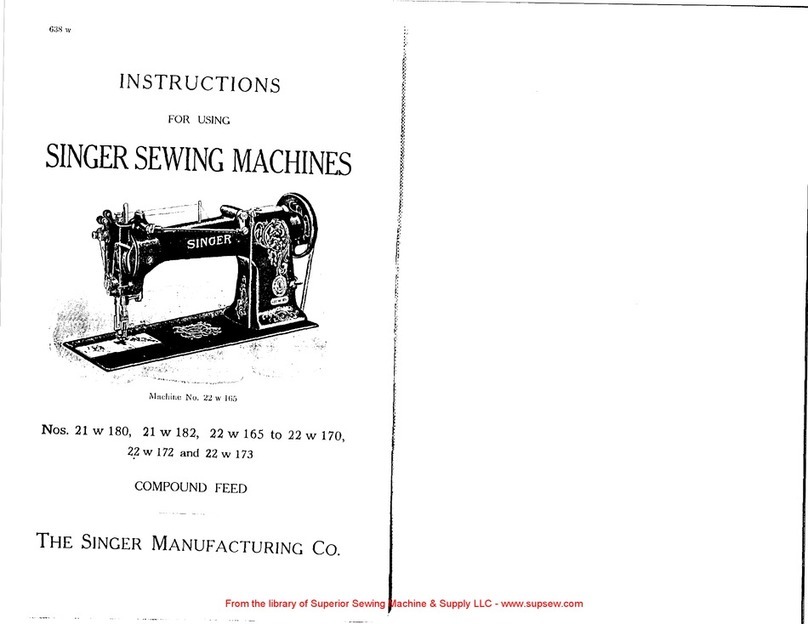
From the library of Superior Sewing Machine & Supply LLC - www.supsew.com
12
To Regulate the Length of Stitch
The
length
of
the
stitch
is
controlled
by
the
feed
eccentric,
which
may
be
adjusted
by
removing
the
screw
plug
(U,F'ig.13)
in
Fig.
14
the
front
or
the
bed
cover.
F1rst
turn
the
machlne
l)Ulley
to
bring
the
lock
screw
(V,Fig.14)
underneath
the
hole,
and
loosen
this
locR
screw.
Then
turn
the
large
scrr,w
(W)
which
projects
beyond
the
body
or
the
eccentric,
to
the
le
ft
or
out\,1ard
for
a
longer
stitch,
or
to
the
right
for
a
shorter
st1tcl1.
Tighten
the
lock
screw
(V)
and
replace
the
screw
plug.
NOTE: The instructions on the
following
pages
are
for
Adjusters
and
Mechanics
only.
To
insure
proper
timing
and
avoid
unnecessary
repetition
these
instructions should
be
followed
in the
order
given.
l
13
To Time
and
Set
the Loopers
in
Relation to the Needles
The
loopers
should
be
at
tlie
end
of
their
backward
stroke,
with
the
points
farthest
from
the
need1es,
at
the
same
time
that
the
needle
bar
is
at
1
ts
lowest
point.
In
this
pos
1
t1on,
the
point
of
the
front
looper
should
be
abo11t
9/64
inch
from
the
cen-
ter
of
the
front
needle.
The
loopers
may
be moved
to
this
po-
sition
after
loosening
tho
clamp-
ing
screw
(CC,Fig.15),
The
loop-
er
t1minr
is
set
by
h:iving
the
first
(when
turning
toward
the
operator)
of
the
two
set
screws
in
the
looper
eccentric
(S2,Fig.
21)
bear
against
a
flat
on
the
shaft.
If
tho
belt
has
been
removed
or
disturbed,
the
lower
shaft
must be
timed
by
loosening
the
Fig.
15 l
two
set
screws
and
the
cap
screw
(E2 and
F2,Fig,20)
in
the
lower
belt
pulle:;,
and
turning
the
lower
shaft
until
the
loopers
are
correctly
timed
with
the
needles.
T1p;:1ten
the
cap
screw
(E2)
t'irst,
then
the
two
set
screws,
To Time the Needle-Avoiding Motion of
!:he
Loopers
The
sidewise
or
needle-avoiding
motion
is
produced
by
the
ec-
centric
at
the
right
of
the
feed
eccen~ric,
on
the
lower
slrnft.
The
loopcrs
should
just
clear
the
bacl:
of
the
needles
on
thP1r
forward
strolrn,
and sl1ould
clear
the
front
of
the
needles
on
tllo
backward
stroke.
A change
in
the
t1rnjng
of
.rhe
eccentric
will
make
the
loopers
come
closer
to
or
far~her
tfom
the
needles
and
therefore
a
different
setting
is
requ1 'ed
for
different
sizes
of
needles.
To
adjust
the
eccentric,
remove tl1'"
cy11p,1er
arm
cover
and
tum
machlne
pulley
until
one
or
tl1e two
set
screws
apl)ears
under
the
hole
(V2,Fig.21).
Loosen
this
screw
about
a
quartor-
turn,
leaving
it
.below
the
surface
of
the
eccentric
so
that
1t
will
not
score
the
inside
of
the
bear·ing.
Bring
the
other
SPt
screw
under
the
hole,
loosen
it
and
ledve
the
screwdriver
in
the
slot
to
hold
the
eccentric
wl11le
turning
the
shaft
to
obtain
the
desired
adjustment.
To
bring
the
loopers
the
same
distance
from
the
needles
on
their
forward
and backward
strokes,
th~y
may
be moved
sideways
on
the
looper
shaft
after
loosening
clamring
screw
(CC,Fig.15).


